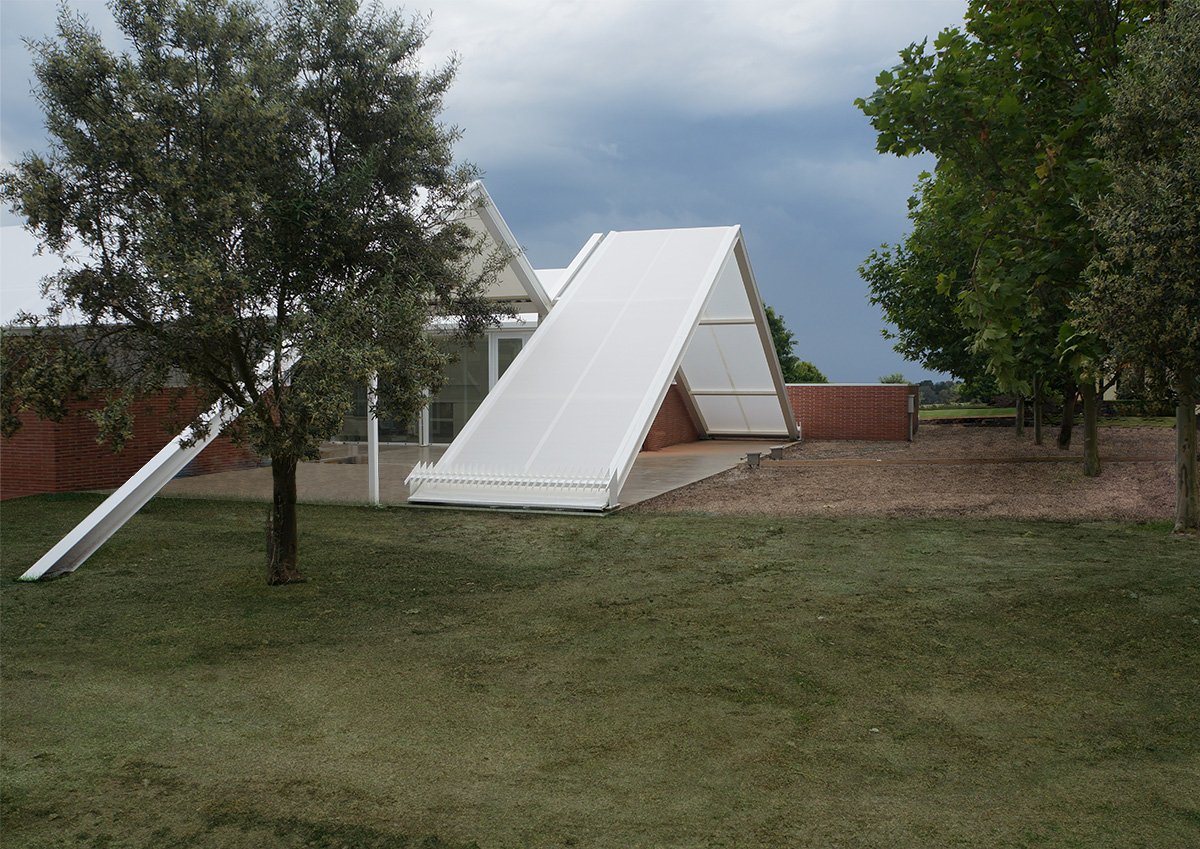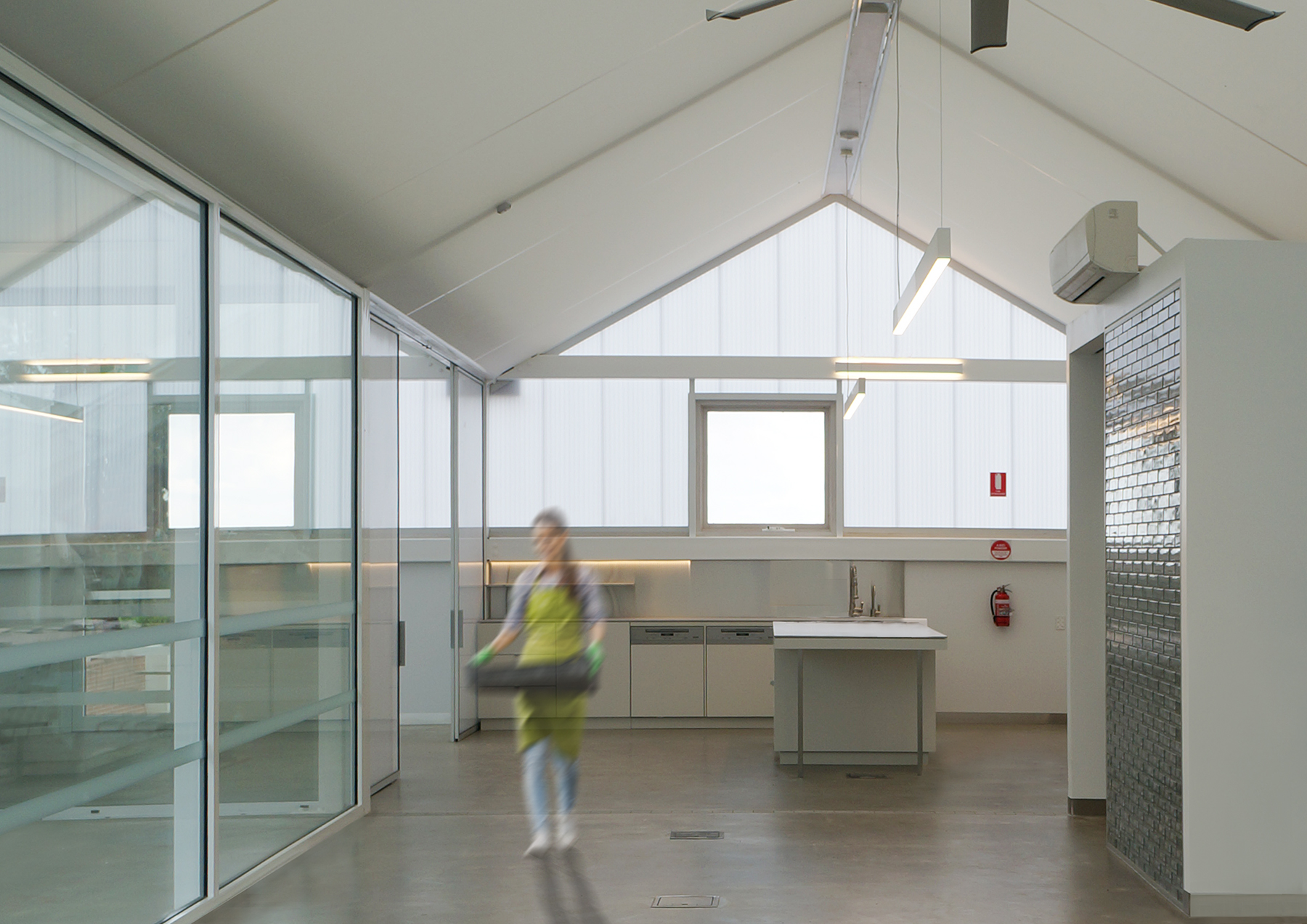‘...people...have a disconnection with where the food and drink they consume comes from...’
Project: INDENTATION
The architecture and landscape has been designed to replicate the process of production (agriculture: viticulture, fruit production, lucerne production and livestock) through the formal composition, aesthetics and spatial alignment of the proposal. As a result, atmospheres are created, enabling the user to connect with the place and locality. The selected materials are deliberately pared back and carefully detailed and positioned. The modest presence of the architectural form contributes to the respect for the land that the user can connect to during their stay.
The client, referred to our office by Melbourne based town planning consultant Hansen Partnership, outlined an initial brief of a bed and breakfast. This was unobtainable due to the Green Wedge Zoning of the site (in place to promote agricultural practices and preventing sub-division). Our office explored how to optimise the use, locality and intrinsically link the proposal to the site.
The result was designed to increase tourism facilities on the Mornington Peninsula with a unique typology of building; a new host farm, where city dwellers and tourists could experience the production and processing of local food and drink in a purpose built facility, catering for up to eight guests, enabling them to reside on site, learn how a hobby farm operates and utilise the cultivated produce with cooking and wine making classes. All too often, the majority of people in urban conurbations have a disconnection with where the food and drink they consume comes from and how it is cultivated.
The building is a mixture of class 3 (accommodation) and class 9b facilities (educational) designed to be subservient to the existing residence on the site, with both new facilities heavily embedded into the highly cultivated surroundings. The educational facilities are designed and based on the surrounding vineyard spacing module and sill heights are set at vine height. The educational component is designed to express all architectural components (exposed steel frame, opalescent walling, unique 45mm Australian terracotta bricks, rugged exposed nil-aggregate concrete floor and multi layered, temperature controlled translucent roof fabric) in order to reflect and express the processing of production on site. The educational facilities consist of wildlife observation area, indoor camp fire, produce cooking class facilities and produce room. The design of the scheme is focused on operating during daylight hours, avoiding a disconnection between external farming areas and internal spaces.
The accommodation component is designed to be set into the landscape, utilising the key components found on site; water, patch-work fields and earth, reflecting the relaxation of the experience of working on a farm, after dark. Internal spaces are designed to reflect external lighting conditions, external building materials (for example, equivalent sized glass bricks reflect external brick cladding) and seamless connection of external and internal covered spaces and uncovered spaces.





